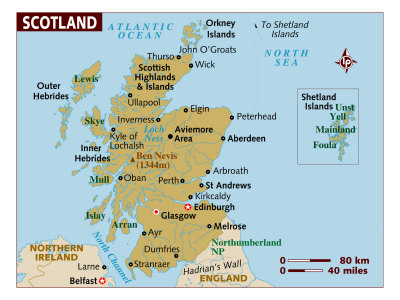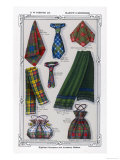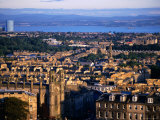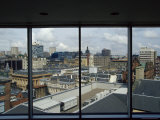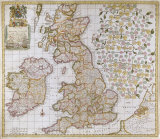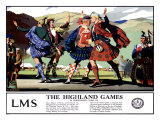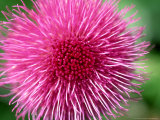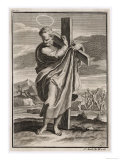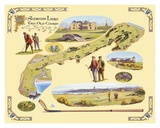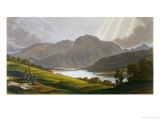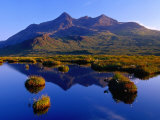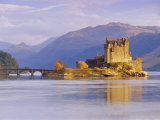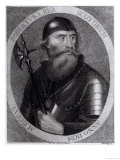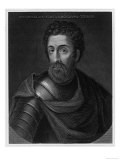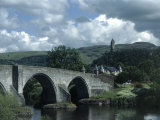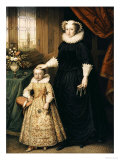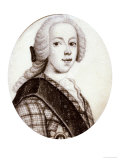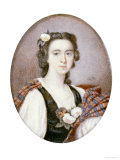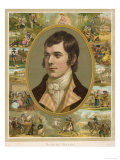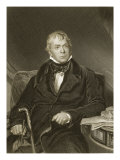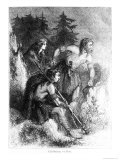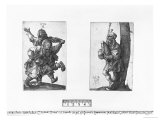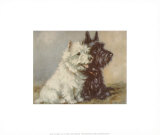|
|
Scotland Posters, Prints, Maps & Charts
for the social studies classroom, home schoolers.
|
geography > Europe > United Kingdom posters > SCOTLAND < social studies
|
Scotland is one the four constituent countries of the United Kingdom (along with England, Wales and Northern Ireland) in the British Isles. Scotland is in the northern third of the island of Great Britain and consists of approx 800 islands. The Atlantic Ocean is to the north and west of Scotland, the North Channel and the Irish Sea to the southwest, and the North Sea to the east. Edinburgh is the capital, Glasgow is the largest city.
Scotland has settlements as early as the Neolitic; two prominate names of early tribal confederations are the Caledonians (Iron Age period) and Picts (from the Gr. and L. meaning painted or tattooed people).
The name Scotland is derived the Latin Scoti, and refers to the Gaels (Gaelic) or people from Ireland, a name bestowed by the conquering Roman Empire in the first century AD.
The Romans constructed Hadrian's Wall across what is now northern England to stop raids from the north.
|
|
|
Edinburgh, the capital city of Scotland, is the second largest city in Scotland and the seventh-most populous in the United Kingdom.
There is evidence of human habitation at the site of Edinburgh since the Bronze Age. By the 12th century AD a castle built on the remains of an ancient volcanic site marked the city. The Old Town and New Town districts of Edinburgh are listed as UNESCO World Heritage Sites.
Famous people associated with Edinburgh: Francis Maitland Balfour, Joseph Black, James Boswell, James Clerk Maxwell, Alexander Graham Bell, Charles Darwin, David Hume, James Hutton, John Napier, Arthur Conan Doyle, J. K. Rowling, Adam Smith, Sir Walter Scott, Marie Carmichael Stokes, Robert Louis Stevenson.
|
|
|
|
Glasgow, situated on the River Clyde, is the largest city in Scotland.
Glasgow was a center of the 18th century Enlightenment, then a leader in the Industrial Revolution and is now an important financial center.
Notable people associated with Glasgow include Joseph Black, James Boswell, Jocelyn Bell Burnell, A. J. Cronin, Sir James Frazer, James Herriot, R. D. Laing, Joseph Lister, David Livingstone, Charles Rennie Mackintosh, Adam Smith, Tobias Smollett, James Watt.
|
|
|
|
|
|
|
Mary, Queen of Scots, stood beneath the Hangman's Tree in Inversaray, to watch the very first Highland Games, in 1554. Still today they are held, every August and September, with stirring rivalry to hammer-throwing, caber-tossing, dancing and wrestling. ...
|
|
|
|
Thistles, an ancient Celtic symbol of nobility, is the national flower of Scotland. The thistle has prickles which help the plant ward off herbivorous animals - and in the case of a Scottish story - warn the Scots when a night time invading Viking yelped out when he stepped barefooted on the thistles sharp points.
|
|
|
|
|
|
|
|
|
|
|
|
|
King Robert I of Scotland
b. 7-11-1274; Scotland
d. 6-7-1329
King Robert I, also known as Robert the Bruce, was one of Scotland's greatest kings and warriors, leading Scotland during the Wars of Scottish Independence (1297) against the Kingdom of England.
|
|
|
|
William Wallace
b. c 1275; Airdrie, Scotland
d. 8-23-1305; Smithfields, London
William Wallace, with Andrew Moray, defeated the English forces at the Battle of Stirling Bridge (9-11-1297), and was knighted and named a Guardian of Scotland.
In 1305 Wallace was convicted of treason and executed - hanged, drawn and quartered - in London.
|
|
|
|
Mary I, Queen of Scots
b. 12-8-1542; Linlithgow Palace, Scotland
d. 2-8-1587; beheaded at Northamptonshire
Mary Stuart was crowned Queen of Scotland when she was nine months old, betrothed to the future Francis II of France when she was five, and widowed at the age of 16. Her second marriage to Lord Darnley, produced James I of England, the namesake of the Jamestown Colony. Mary, who was raised a devout Catholic, was the focus of Henry VIII's “rough wooing”, a 1544-1551 war between England and Scotland to make sure his son Edward, and Mary were betrothed. As an adult Mary was eventually imprisoned by her cousin, Elizabeth I, for eighteen years, and finally executed for treason at Fotheringhay Castle.
• Mary, Queen of Scots
• more Women Rulers posters
|
|
|
|
Prince Charles Edward Stuart
(Bonny Prince Charley)
b. 12-31-1720; Rome
d. 1-31-1788; Rome
Prince Charles Edward Stuart, known as Bonny Prince Charley and “The Young Pretender”, was the son of James Francis Edward Stuart, “The Old Pretender” (1688-1766), grandson of Jacobite James II of England and Ireland [and James VII of Scotland] (1633-1701), who was deposed from the thrones in 1688. He was also the grandson of Charles I and Henrietta Maria, and nephew of Charles II.
Charles attempted to gain back the throne but was forced to flee Scotland, which he did with the help of Flora Macdonald (1722-1790). The traditional Scottish folk song “My bonnie lies over the ocean”, may refer to Bonnie Prince Charley.
|
|
|
|
|
|
|
|
previous page | top
|
|
I have searched the web for visual, text, and manipulative curriculum support materials - teaching posters, art prints, maps, charts, calendars, books and educational toys featuring famous people, places and events - to help teachers optimize their valuable time and budget.
Browsing the subject areas at NetPosterWorks.com is a learning experience where educators can plan context rich environments while comparing prices, special discounts, framing options and shipping from educational resources.
Thank you for starting your search for inspirational, motivational, and educational posters and learning materials at NetPosterWorks.com. If you need help please contact us.
|
|
|












